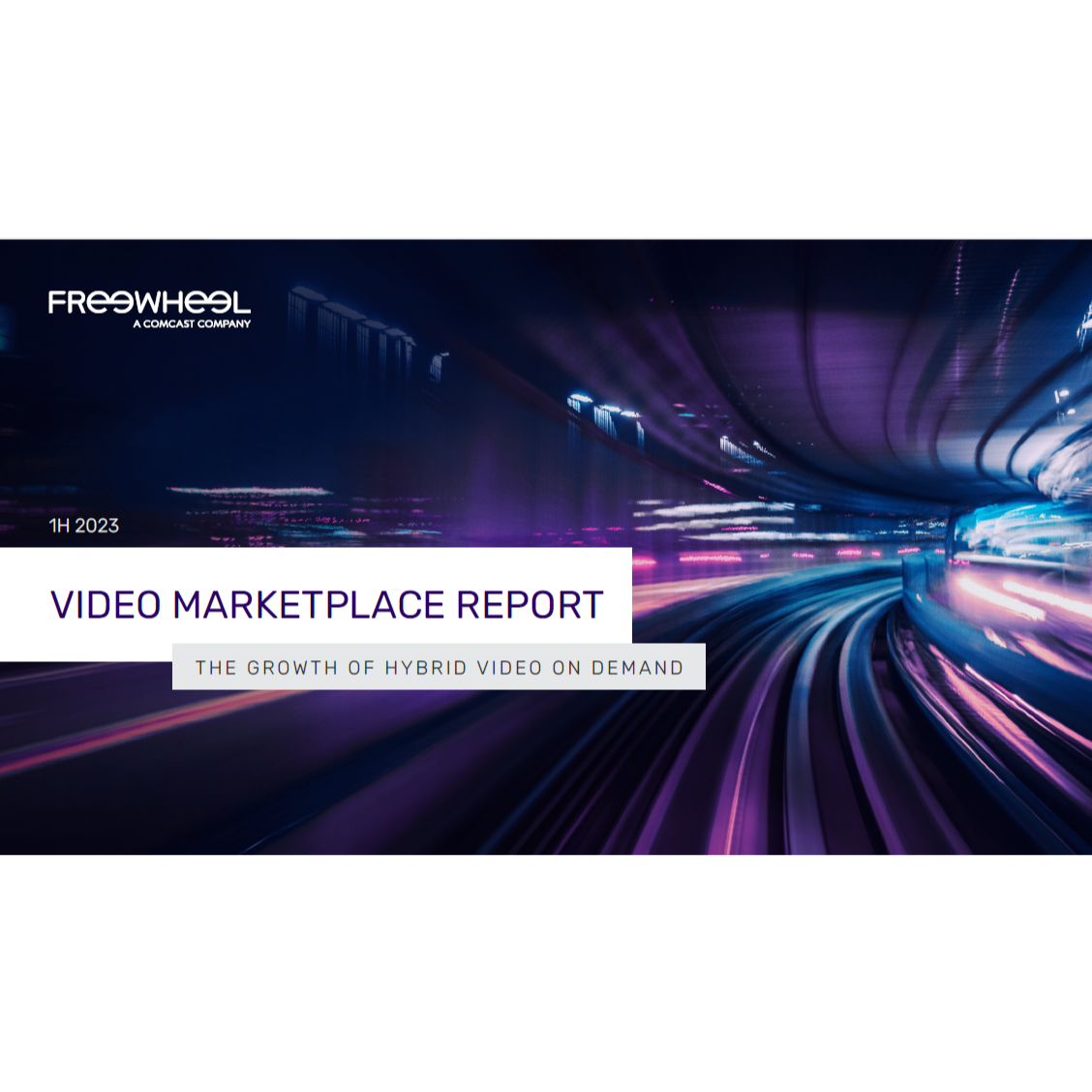Revealing Video Marketplace Trends in FreeWheel's 1H23 Report

For the past thirteen years, FreeWheel's Video Marketplace Report has provided the advertising industry with core assessments of an ever-evolving national and global digital video marketplace. Released twice a year, the report includes an analysis of the advertising marketplace, current audience usage habits, and an assessment of the programmatic marketplace.
According to Bridget Greaney, Consultant at Comcast-owned, FreeWheel, the basis of the analysis is derived from one of the largest data sets available on rights-managed, ad supported video content coming from the FreeWheel platform on premium video for 1H23, compared to 1H22. This yielded key takeaways for the industry. According to Greaney, "We're seeing a shift toward more ad-supported tiers with the convergence of publishers and consumers. The publishers are looking for a more financially sustainable approach to streaming, with some now offering ad-supported tiers for their subscription streaming platforms."
From the consumer side of the business, she indicated that, "Consumers are looking for a way to manage their entertainment costs. We now see more ad-supported premium video content, which has resulted in overall ad view growth at 9% across the U.S. and EU compared to the same time last year."
Unsurprisingly, viewer experience is becoming an important factor in ad optimization. "There is increasing importance of the viewer experience because there is so much more premium video relying on ad-supported content. Optimizing the viewer experience becomes vital," she asserted. "It's always been important, but it's becoming even more so. We think of three different buckets related to this topic, quantity, quality, and relevancy of the ads for the audience, and have found that audiences do not mind watching advertisements as long as ads do not disrupt their overall content viewing experience." In addition to ad relevancy, viewer experience is impacted by other factors such as content type and screen size. "How does that factor into what publishers may consider when it comes to the viewer experience?" she queried.
Comparing global to U.S. data, she explained that "one very interesting point is how the distribution platform breaks down. TV everywhere (authenticated streaming services accompanying a cable/satellite subscription) is most prominent in both the U.S. and the EU. But that's where the similarities for distribution platform end. There's a significantly larger use of operator authentication platforms in the EU than in the U.S. and a lot more OTT in the U.S. That's in part because Europe has a much stronger use of set-top boxes, whereas in the U.S., FAST channels and direct to consumer OTT platforms are more prominent. It is interesting to see that while the majority platform is still the same in both worlds, once you start digging in, different regions function a bit differently." She saw from the data that, "Content curation opportunities vary by device. Longer-form content accessed on a larger screen, for example, allows publishers to accommodate more mid-rolls breaks of longer duration." But according to Greaney, the threshold for the number of commercials can become disruptive for a viewer if screen size is not considered. "Viewers often have a lower threshold on smaller screens. So, you have to be more particular."
In terms of trends, programmatic is one area that has experienced dramatic growth over the years. "We saw 21% growth in the U.S. in programmatic distribution. It is currently 35% of the ad views in the U.S. and 19% in the EU in the first half of this year. It is a growing area of the industry," she noted.
Finally, when you compare audience targeting approaches, the U.S. more heavily utilizes behavioral targeting while the EU relies more heavily on demographic targeting.
Looking ahead, Greaney believes that "The video marketplace will have more premium video content that is ad-supported, as we see already with the hybrid model of video-on-demand subscription services and FAST channel growth. "This is becoming more of a trend." She explained, "Evolution has always been the nature of the industry. Think about traditional television and its use of commercial breaks. We're seeing more and more premium content shift toward this use of advertising. With that, comes the growing importance of the viewer experience to create an optimized ad-supported environment for consumers."
Click the social buttons to share this story with colleagues and friends.
The opinions expressed here are the author's views and do not necessarily represent the views of MediaVillage.org/MyersBizNet.


